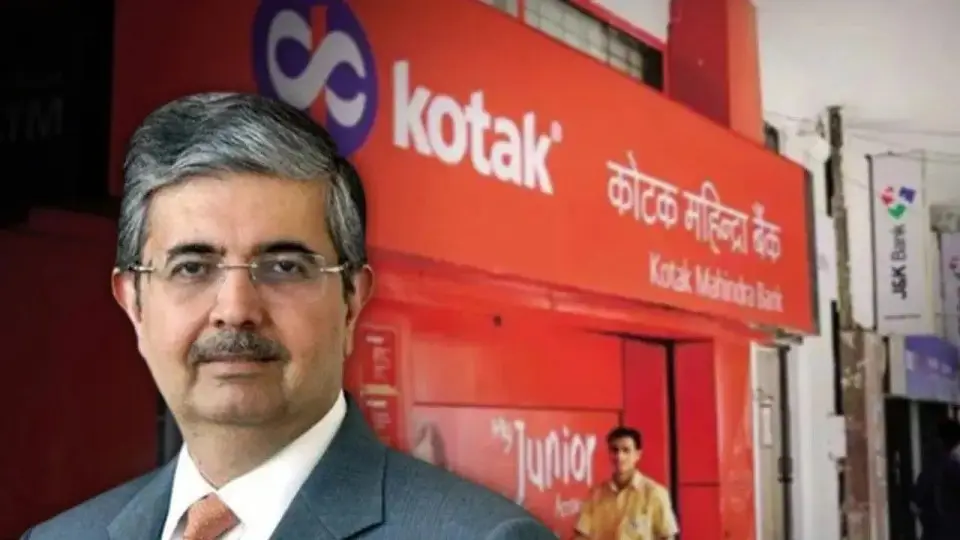
Uday-Kotak (Social Media)
Business News:In an unexpected turn of events, one of the country’s most prominent banks, owned by the richest banker in India, suffered a massive financial blow. Within just six hours, the bank saw its market value plummet by an astronomical ₹32,000 crore. This shocking development has sent tremors through the financial world, raising alarm bells among investors, customers, and regulators. The incident has triggered widespread concerns over the stability of the banking sector, leading to a deep investigation into the reasons behind such a severe loss.
The unexpected financial disaster unfolded rapidly, catching both the bank’s management and the financial community off guard. Within a matter of six hours, nearly ₹32,000 crore was wiped off from the bank’s market capitalization. This rapid downfall has raised questions about the internal controls and risk management practices of one of the most successful financial institutions in the country. With a reputation built on years of profitability and growth, the sudden loss has left many wondering how such a catastrophic event occurred so swiftly The timing of this event has further compounded the uncertainty. It comes at a time when the global economy is already dealing with inflationary pressures and volatility in markets. Investors, who had once viewed the bank as a safe bet, are now scrambling to safeguard their interests.
Following the news of the massive loss, the bank’s stock prices tumbled, leading to an even greater sense of panic. Within hours, the bank’s share price dropped sharply, causing a ripple effect in the stock market. Investors who held significant stakes in the bank were seen rushing to liquidate their positions, fearing further declines. The panic among investors was palpable, and several brokerage firms warned that the market might see more turbulence if the situation was not controlled. This sudden drop in stock value has also raised concerns about the bank’s liquidity position. Investors are now questioning whether the bank has sufficient capital buffers to absorb such a large loss without impacting its operations.
Initial investigations into the cause of the loss have pointed towards a combination of factors. Experts suggest that poor financial management and overly ambitious investment strategies may have played a significant role. The bank had made a series of risky financial moves, betting heavily on volatile markets, which ultimately backfired. In addition, reports suggest that there were internal financial irregularities, including questionable transactions and a lack of proper oversight in key decision-making processes. Some analysts argue that the bank’s leadership may have been overly focused on expansion and profit-maximizing strategies, neglecting to adequately manage risks associated with certain high-stakes investments. As the investigation continues, the bank’s board of directors has promised to take swift action to address these issues. They have pledged to overhaul internal controls and tighten oversight to ensure that such a financial debacle does not occur again.
In light of the severity of the situation, both the Reserve Bank of India (RBI) and government authorities have taken steps to ensure that the financial system remains stable. The RBI has issued a statement expressing its concern over the situation, assuring that it is closely monitoring the developments. The central bank has also indicated that it will take necessary steps to safeguard the interests of depositors and investors. Meanwhile, the Indian government has called for an urgent review of the situation. Economic experts have warned that if the crisis is not addressed quickly, it could have broader implications for the financial stability of the country. The government is likely to implement stronger regulations to ensure better risk management practices across all financial institutions.
The sudden collapse of the bank’s financial position has created a ripple effect among its customers. Depositors, many of whom were attracted by the bank’s history of stability and strong returns, are now uncertain about the safety of their funds. Some customers have reportedly started withdrawing their savings, fearing a possible liquidity crisis at the bank.At the same time, investors are deeply concerned about the long-term impact on the bank’s reputation. With its stock price in freefall, questions are being raised about whether the bank can recover its standing in the market. The loss of investor confidence could result in prolonged instability, not only for the bank but also for the broader banking sector.
While the focus remains on the troubled bank, experts warn that the impact of this financial disaster could extend far beyond a single institution. The banking sector as a whole could face increased scrutiny, with investors reevaluating their positions in other banks. A loss of investor confidence in the banking system could lead to capital outflows, affecting the overall economy.
Moreover, the event has underscored the vulnerability of the financial sector to market risks and the importance of robust risk management practices. If other banks and financial institutions fail to learn from this crisis, they could face similar challenges in the future.
In the aftermath of the loss, the bank has outlined several steps aimed at recovery. The leadership has committed to a comprehensive overhaul of its risk management framework and financial strategy. A new leadership team has been put in place to guide the bank through this crisis and restore investor and customer confidence.Additionally, the bank is exploring partnerships and other strategic avenues to improve its capital position and liquidity. The management has also promised to work closely with regulatory bodies to ensure that all actions taken are in line with industry best practices.













Copyright © 2025 Top Indian News
